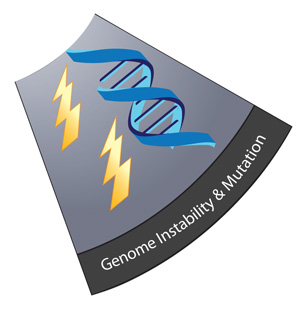HypOxygen continues to look at the way the iconic “Hallmarks of Cancer”, as first described by Douglas Hanahan and Robert Weinberg, are influenced by hypoxia in the tumor microenvironment. Oxygen around and within the tumor cells is central to metabolism, immunology, epigenetics and therapy resistance of all the cancers; in the lab, oxygen levels during tumor cell culture exert effects on metabolism, maintenance, cell yield, and cell survival.
That’s why the authentic physiological cell culture conditions in the HypOxystation hypoxia workstation help advance research into tumor progression and other events which determine malignancy and outcome of cancer diseases. The HypOxystation enables glove-less access to cultivate and manipulate cells under physiological conditions, in a HEPA-clean environment.

In this mini-review series, HypOxygen takes a closer look at the way HypOxystation users worldwide are delineating “Hypoxia and the Hallmarks of Cancer”. Previously, we had showcased research by HypOxystation users involved with Avoiding Immune Destruction and Tumor Promoting Inflammation.
Next, we want to show the many ways in which HypOxystation users are researching the Hallmarks Genome Instability and Mutation and Enabling Replicative Immortality. One of those researchers, Dr. David Ho of the University of Miami, presented his results at the Cell Symposium on Cancer, Inflammation and Immunity in San Diego in June. Let us show you how HypOxygen can Define Your Environment.

1. Genome Instability and Mutation
Tumor hypoxia drives genomic instability both by increasing the volume of mutations (DNA strand breaks, base damage, and gene amplification) and by diminishing DNA repair efficiency. The low levels of oxygen typical of the tumor microenvironment decrease transcription of genes related to homologous repair and non-homologous end-joining, leading to the genetic instability observed in hypoxic tumor cells. Hypoxia induces production of reactive oxygen species ROS, which interact with nucleic acids, proteins and lipids, causing cellular damage and mutagenesis. Hypoxic activation of HIF-1 also upregulates expression of certain miRNA’s which suppress DNA repair pathways.
 LITERATURE:
LITERATURE:
- Jiang et al. (2016) “Hypoxia Potentiates the Radiation-Sensitizing Effect of Olaparib in Human Non-Small Cell Lung Cancer Xenografts by Contextual Synthetic Lethality” Int J Radiation Oncol Biol Phys, Vol. 95, No. 2, pp. 772 e781, 2016
www.redjournal.org/article/S0360-3016(16)00056-0/abstract HypOxystation user - Doherty et al. (2016) “Photodynamic killing of cancer cells by a Platinum(II) complex with cyclometallating ligand” Nature Scientific Reports 6:22668 (2016)
www.ncbi.nlm.nih.gov/pmc/articles/PMC4778139/ HypOxystation user - Hunter et al. (2016) “Hypoxia-activated prodrugs: paths forward in the era of personalised medicine” Br J Cancer. 2016 May 10; 114(10): 1071–1077
www.ncbi.nlm.nih.gov/pmc/articles/PMC4865974/ HypOxystation user - Leszczynska et al. (2016) “Mechanisms and consequences of ATMIN repression in hypoxic conditions: roles for p53 and HIF-1” Scientific Reports 6:21698 (2016
www.ncbi.nlm.nih.gov/pmc/articles/PMC4753685/ HypOxystation user - Timpano and Uniacke (2016) “Human Cells Cultured Under Physiological Oxygen Utilize Two Cap-binding Proteins to Recruit Distinct mRNAs for Translation” Journal of Biological Chemistry 291(20):jbc.M116.717363
www.jbc.org/content/291/20/10772.abstract HypOxystation user - Haider et al. (2016) “Genomic alterations underlie a pan-cancer metabolic shift associated with tumour hypoxia“ Genome Biology (2016) 17:140
www.ncbi.nlm.nih.gov/pubmed/27358048
2. Enabling Replicative Immortality
Cancer is characterized by a nearly unlimited capacity of the tumor cells to proliferate. Hypoxia in the rapidly growing tumor supports immortalization of a subset of cancer cells, the “cancer stem cells”. Factors such as hypoxia in the tumor microenvironment derail signals indicating senescence and initiating apoptosis, enabling an immortal lifespan. Telomerase, Notch, c-Myc, and OCT4 mediate the acquisition of a stem cell-like phenotype through down-regulation of differentiation genes and activation of stem genes, generating CSC’s with aggressive properties. These cancer stem cells residing in an hypoxic tumor niche are uniquely resistant to many therapies, where low oxygen promotes stemness, maintenance, and self-renewal of the CSC’s. Metastasis and invasion by these CSC’s induce the formation of secondary tumors, which in most cases dramatically worsen the prognosis for cancer patients.
LITERATURE:
- Wigerup et al. (2016) “Therapeutic targeting of hypoxia and hypoxia-inducible factors in cancer” Pharmacology & Therapeutics 164 (2016) 152–169
www.sciencedirect.com/science/article/pii/S0163725816300559 HypOxystation user - Ho et al. (2016) “Systemic Reprogramming of Translation Efficiencies on Oxygen Stimulus” Cell Reports 14, 1293–1300, February 16, 2016
www.ncbi.nlm.nih.gov/pmc/articles/PMC4758860/ HypOxystation user - Prickaerts et al. (2016) “Hypoxia increases genome‑wide bivalent epigenetic marking by specific gain of H3K27me3” Epigenetics & Chromatin (2016) 9:46
www.ncbi.nlm.nih.gov/pmc/articles/PMC5080723/ HypOxystation user - Richards et al. (2016) “Cell cycle progression in glioblastoma cells is unaffected by pathophysiological levels of hypoxia” PeerJ 4:e1755
www.ncbi.nlm.nih.gov/pmc/articles/PMC4782743/ HypOxystation user - Zhang et al. (2016) “Hypoxia induces the breast cancer stem cell phenotype by HIF-dependent and ALKBH5-mediated m6A-demethylation of NANOG mRNA” PNAS vol. 113 no. 14
hwww.ncbi.nlm.nih.gov/pmc/articles/PMC4833258/ - Carnero & Lleonart (2016) “The hypoxic microenvironment: A determinant of cancer stem cell evolution” Bioessays 38: S65–S74
onlinelibrary.wiley.com/doi/10.1002/icl3.1039/pdf